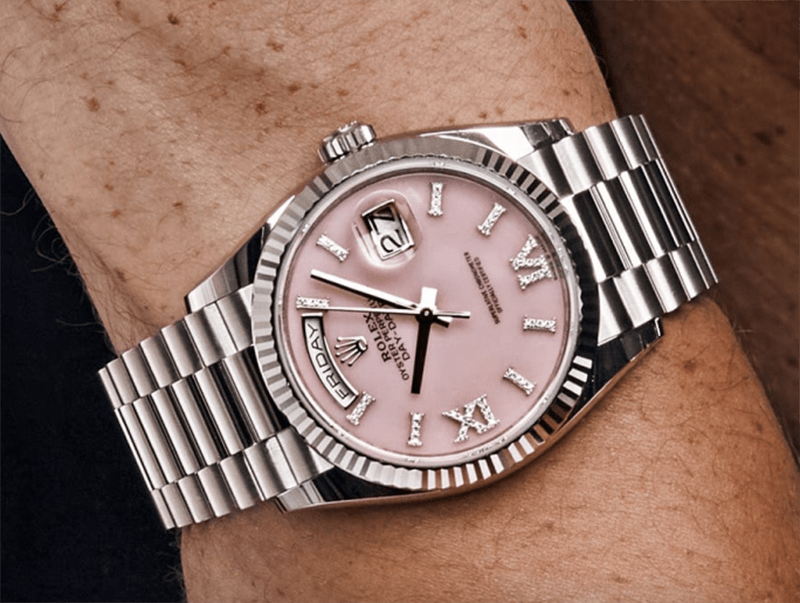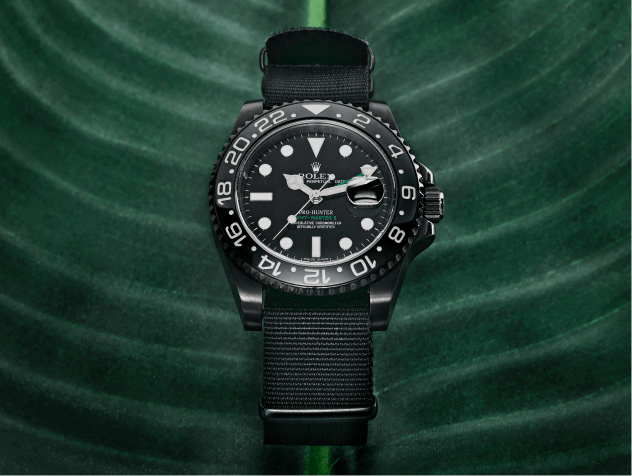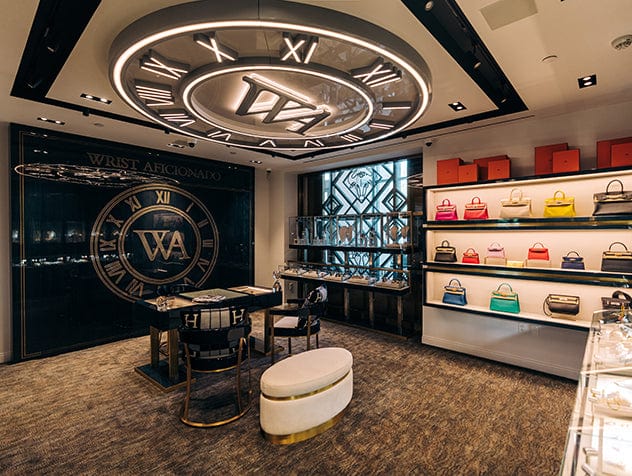In the United States, one luxury jewelry brand stands apart from the rest as being synonymous with American elegance: Tiffany & Co. In its nearly 200 years of history, Tiffany has introduced several motifs that inform the modern jewelry aesthetic, from the “Return to Tiffany” key tags and locks to Elsa Peretti’s fluid and sinuous shapes.
Tiffany’s newest core offering–the “Tiffany Lock” collection–signals a new chapter for American jewelry. Similar to a “Cartier Love” bracelet, the Tiffany Lock bracelet is a status symbol and collector’s item, with a design intended to resonate for generations. The addition of the Tiffany & Co. Lock necklace, Tiffany Lock ring, and Tiffany Lock earrings has given brand admirers even more pieces to add to their collections.
The Tiffany & Co. Lock bracelet’s minimalist and modern unisex design surprisingly has its roots in one of Tiffany’s earliest chapters. The style’s connection to early Tiffany designs ensures it represents the true ethos of the American jewelry house and is a worthy investment for the future.
The History of an American Institution
Charles Lewis Tiffany–alongside business partner John B. Young–founded Tiffany & Co. in 1837 in New York City as a stationery and fine goods store. Over subsequent decades, Tiffany made a name for itself in jewelry, accessories, and objects for the home. The business became renowned for its silver works, earning global accolades unheard of for an American jewelry company, and establishing its own design school dedicated to the medium under the umbrella of its silver studio.
In its first century of business, Tiffany proved itself to not only be a master metalsmith but also developed a reputation for its work with some of the world’s rarest gems. In 1877, the company acquired a 287.42-carat rough yellow diamond discovered at South Africa’s famed “Kimberley” diamond mine. Without the aid of modern diamond mapping technology, Tiffany meticulously planned how it would cut and polish the stone, transforming it in 1878 into its current 128.54-carat iteration with 82 facets and naming it the “Tiffany Diamond.”
The legendary stone is still on display today at Tiffany’s New York City flagship store, dubbed “The Landmark” after a substantial renovation completed in 2023.
While considered a feat of diamond cutting of the era, rare and unique stones like the Tiffany Diamond were mere novelties compared to the lasting impact of the diamonds in engagement rings that were at the heart of the growing business. In 1886, Charles Lewis Tiffany unveiled diamond rings in which the stone was set atop the band, rather than level with the metal. This new type of diamond setting allowed for more light to pass through the stone, creating more fire and sparkle. The look was a hit with brides. The style has been called the “Tiffany Setting,” ever since, paving the way for the modern engagement ring aesthetic.
Over its nearly 200 years of business, Tiffany & Co.’s identity has become inextricably linked with that of the United States itself. Tiffany has often created commemorative designs and medals for the U.S. government. In 1885, the company redesigned the “Great Seal of the United States,” a symbol that is included to this day on the one-dollar bill.
Tiffany is woven into the stories of many of America’s most important figures. President Abraham Lincoln purchased a suite of jewelry consisting of seed pearls for his wife, First Lady Mary Todd Lincoln, in 1862 from Tiffany & Co., while President Franklin D. Roosevelt bought a Tiffany engagement ring in 1904 for his wife, First Lady Eleanor Roosevelt.
Tiffany has also made its mark on American culture via its rich history of creating sports trophies, such as the Vince Lombardi Trophy awarded each year to the winning team of the NFL Super Bowl, and the Larry O’Brien Championship Trophy awarded each year to the winning team of the NBA Finals. The jeweler continues this tradition today, crafting trophies at the Tiffany Hollowware Workshop in Rhode Island.
Tiffany’s has also held an indelible role in American popular culture, with no moment as impactful as the 1963 film “Breakfast at Tiffany’s” starring Audrey Hepburn. In the movie, Tiffany is a symbol of the lead character Holly Golightly’s reverence for beauty and her upper class aspirations. Today, Tiffany works with pop cultural powerhouses like Beyonce and Jay-Z, who featured in recent advertising campaigns.
Introducing a New Icon: The Tiffany Lock
As Tiffany has evolved to become a purveyor of modern luxury fine jewelry, it has strategically held on to elements of its heritage that bridge its storied past to its glittering present. When crafting new jewelry, Tiffany often looks to symbols found in its archives that it can adapt to suit contemporary fashion and style.
It was this process that led to the advent of Tiffany’s most significant new jewelry design in decades. In 2022, the company launched the Tiffany Lock, a unisex line of bracelets that has since expanded to include the Tiffany Lock ring, Tiffany Lock pendant, and Tiffany Lock hoop earrings.
Even with the advent of new styles, the substantial Tiffany & Co. Lock bangle with its unique swivel closure remains at the heart of the Tiffany Lock story. To open and close the bracelet, one must pull the two bangle components apart to allow one side to swivel fully open and shut. The design is an engineering feat that took an entire year to develop and execute. The resulting design merges elegance with utilitarianism.
The inspiration for this mix of functionality and style lies deep within the Tiffany Archives. Tiffany’s first jewelry padlock on record dates to 1883 when a customer commissioned a brooch in the shape of a padlock for his wife.
Artisans engraved the piece with “Fide et Amore,” Latin for “With Faith and Love.”
Since then, the padlock has remained a symbol of lasting commitment at Tiffany & Co. Functional locks transformed into jewelry have graced Tiffany’s jewelry cases for decades, the styles evolving into different iterations.
Often, the padlock motif has dovetailed with the Return to Tiffany collection, which is another design born out of functionality.
Return to Tiffany began in 1966 as a key tag reading: “Please Return to Tiffany & Co. New York.” Each tag had a unique serial number that could be traced to its buyer. Therefore, the tags helped to reunite owners with their lost keys at Tiffany’s New York City headquarters.
By 1980, the key tag had evolved into jewelry, with Tiffany debuting a 14-karat yellow gold heart-shaped Return to Tiffany pendant on a box chain. Return to Tiffany padlock pendants became in-demand jewelry styles alluding to Tiffany & Co.’s history but embracing current fashions.
With today’s modern, genderless attitude toward getting dressed, padlocks make appearances as unisex pendants in the popular “HardWear” collection, and as heart-shaped pendants in the current Return to Tiffany range, sporting the signature messaging and now called “Love Locks.”
The new Tiffany & Co. Lock collection has a very different look from its historical predecessors. The allusion to TIffany padlocks is more conceptual than overt, with Tiffany Locks featuring entirely new engineering but the same symbolism of an everlasting bond.
The Tiffany Lock’s sleek silhouette and range of sizes makes it an equally attractive accessory for all genders. Tiffany has demonstrated as much with its mix of men and women sporting Tiffany Lock earrings, Tiffany Lock necklaces, Tiffany Lock rings, and Tiffany Lock bracelets in its advertising campaigns.
Tiffany Locks are available in 18-karat yellow gold, white gold, and rose gold, as well as mixed metal versions that combine yellow and white gold and rose and white gold. Some versions are rendered in plain gold without stones for a clean, minimalist feel. Others feature subtle diamond accents for a hint of sparkle, while some versions have bright rows of diamond pavé.
With Tiffany’s thoughtful and deliberate approach to its jewelry collection expansion, the introduction of the Tiffany Lock collection marks a major new chapter in the company’s history. It is reflective of today’s looser styling edicts in which rules about dressing for one’s gender are relaxed. It also embraces a more casual approach to luxury than in years past, in which beautiful collector’s items can be mixed, matched, and stacked, and as easily worn with denim and sneakers as with a formal dress.
As with all of Tiffany’s core styles, the Tiffany Lock aesthetic is centered on timelessness. Today’s Tiffany Lock will be tomorrow’s heirloom.













